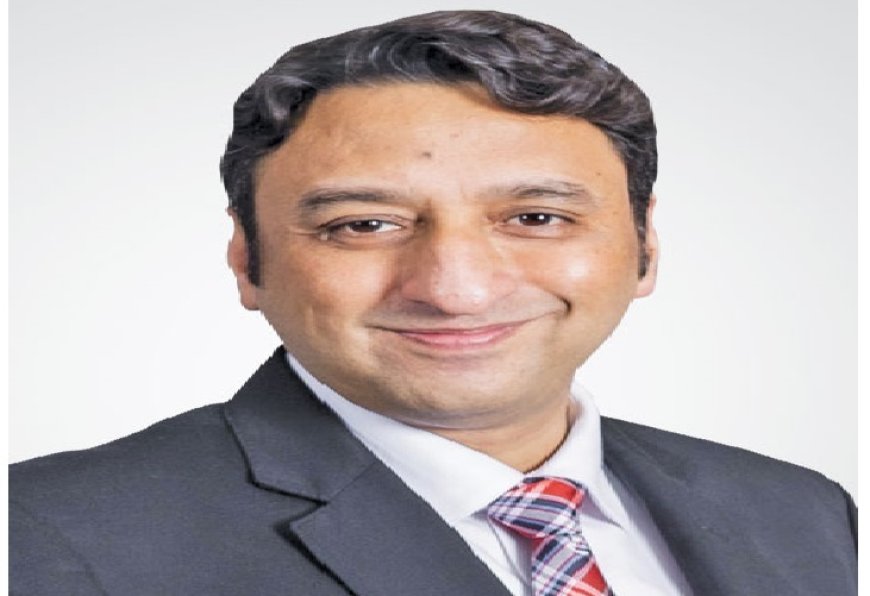Despite rising input costs, demand has remained healthy
Affordable housing refers to houses with carpet area of 60 sq m in metros, 90 sq m in non-metros and priced under Rs 45 lakhs. Affordable housing has witnessed major traction over the last few years, due to the government's policy push to increase supply of low-cost homes for economically weaker sections (EWS)/low-income groups (LIG).

Shalin Raina
Managing Director, Residential Services, Cushman & Wakefield
What are the prevailing market trends in the affordable housing market in India?
Affordable housing refers to houses with carpet area of 60 sq m in metros, 90 sq m in non-metros and priced under Rs 45 lakhs. Affordable housing has witnessed major traction over the last few years, due to the government's policy push to increase supply of low-cost homes for economically weaker sections (EWS)/low-income groups (LIG). The share of affordable segment in total unit launches has witnessed an upward trend from around 26% in 2016 to 29% in 2021.The Central Government's Pradhan Mantri Awas Yojana (PMAY) is the flagship affordable housing policy and infrastructure status has been granted to affordable housing. State governments have also made efforts to drive growth of affordable housing through dedicated policies. Incentives such as higher FAR, waiver of external development charges (EDC), single-window approvals are provided to developers.
Low ticket prices, better demand-side financing terms such as Credit Linked Subsidy Scheme (CLSS), lower stamp duties on affordable units have kept demand resilient for such projects. Robust residential sector recovery in the post pandemic period and government's focus on low-cost housing have attracted institutional investors with formation of platforms to fund affordable housing projects.
How are the government policies like Housing for All and PMAY driving the demand for affordable housing segment in India?
PMAY is the chief policy initiative of the Indian government to drive demand for affordable housing. This policy has the following schemes:
- 'In-situ' Slum Redevelopment (ISSR)
- Credit Linked Subsidy Scheme (CLSS)
- Affordable Housing in Partnership (AHP)
- Beneficiary-led individual house construction /enhancements (BLC)
Under BLC, the government provides funding for individual families to construct houses. AHP provides for partnership with the private sector to increase supply of low-cost housing. Interest subsidy is provided to EWS/LIG households on housing loans through the CLSS initiative. The PMAY scheme is valid up to December 2024.
As of September 2022, over 6 million houses have been constructed and delivered to beneficiaries in urban areas under the PMAY scheme.
What is your view on the demand-supply scenario in affordable housing segment?
With rapid urbanization across the country, the urban population is expected to grow from 35% at present to 53% in 2050. The huge shortage of houses in urban India (~20 million units), especially for the EWS/LIG groups, has been recognized by the government and policies have been framed to address this issue. The government's decision to grant infrastructure status to the affordable housing has further stimulated this segment and encouraged participation by a wider community of institutional investors. Reputed developers have entered this segment and increased supply of affordable homes.
However, the demand-supply gap continues to exist though supply has increased with implementation of PMAY. The government has developed over 6 million units in the last 6-7 years and the private sector has been able to deliver around 2.4 lakh units. Both the government and private developers are expected to increase supply substantially over the next few years to meet the pent-up demand.
How is rising input cost affecting the affordability of affordable housing concept, especially in tier-1 and tier-2 cities?
Rising input costs is a near term risk for the residential sector though it has not yet led to any significant price hike in Tier I and II cities. In the top metros, average price hike has been 4-5% with developers keen to maintain the demand momentum and increase sales. Moreover, large developers are in a better position to absorb higher input costs.
Affordable housing has not witnessed any decline in affordability because price hikes in this segment has been negligible. This is a price-sensitive segment and developers have refrained from any sharp price hike. Despite rising input costs, demand has remained healthy, and this is reflected in increasing launches of affordable projects.
What is the way forward for the affordable housing market?
Affordable housing supply is expected to increase in the medium term with government policy supporting the sector. Both Tier I and II cities are set to witness significant supply addition with some of the smaller cities accounting for a healthy proportion of upcoming projects. Over the past couple of years, affordable housing sector's share of residential PE investments has increased to approx 15-20%, from ~10% up to 2020. This figure is likely to rise with prominent investors such as Motilal Oswal, HDFC Capital Fund, and Kotak Investment Advisors entering the affordable segment. Rs 20,000 crore is reportedly being raised by prominent PE funds for investment in the affordable housing space over the next few years.
The Indian government's Affordable Rental Housing Complex (ARHC) policy is a major initiative to provide low-cost rental housing for urban migrants falling under the LIG and EWS categories. Timely implementation of this policy will create a strong affordable rental housing market and boost affordable segment as a whole.
Hits: 0







